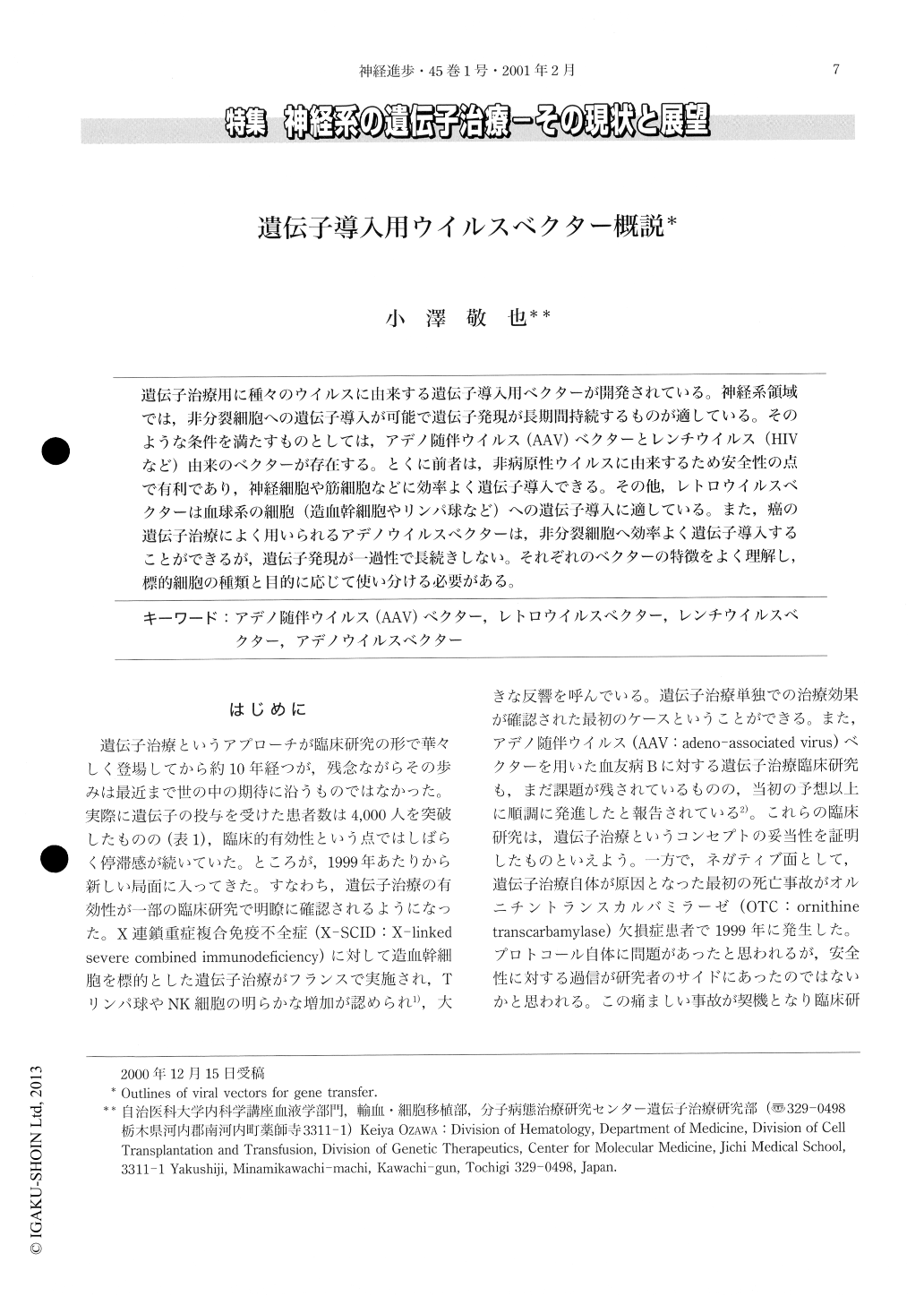Japanese
English
- 有料閲覧
- Abstract 文献概要
- 1ページ目 Look Inside
遺伝子治療用に種々のウイルスに山来する遺伝子導入用ベクターが開発されている。神経系領域では,非分裂細胞への遺伝子導入が可能で遺伝子発現が長期間持続するものが適している。そのような条件を満たすものとしては,アデノ随伴ウイルス(AAV)ベクターとレンチウイルス(HIVなど)由来のベクターが存在する。とくに前者は,非病原性ウイルスに由来するため安全性の点で有利であり,神経細胞や筋細胞などに効率よく遺伝子導入できる。その他,レトロウイルスベクターは血球系の細胞(造血幹細胞やリンパ球など)への遺伝子導入に適している。また,癌の遺伝子治療によく用いられるアデノウイルスベクターは,非分裂細胞へ効率よく遺伝子導入することができるが,遺伝子発現が一過性で長続きしない。それぞれのベクターの特徴をよく理解し,標的細胞の種類と目的に応じて使い分ける必要がある。
Several different viral vector systems are in use or under consideration for somatic gene transfer. Among them, adeno-associated virus (AAV) vectors and lentiviral vectors can transduce non-dividing neurons and long-term gene expression can be obtained. As for lentiviral vectors, human immunodeficiency virus (HIV) vectors are currently well investigated. However, the safety issue of HIV vectors is serious problem. On the other hand, AAV vectors, derived from non-pathogenic virus, possess several unique properties and are potentially most appropriate for gene therapy of neurological diseases.

Copyright © 2001, Igaku-Shoin Ltd. All rights reserved.


